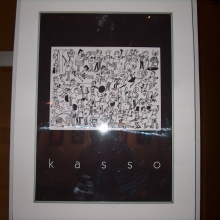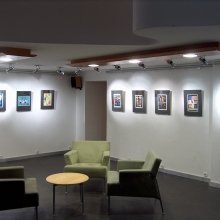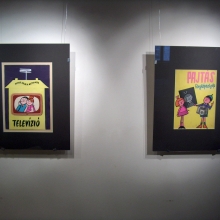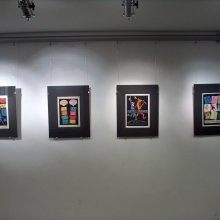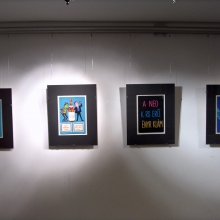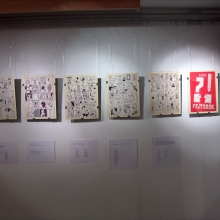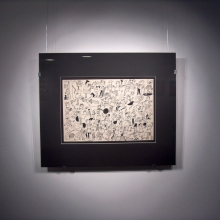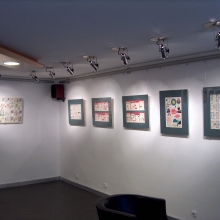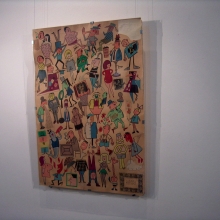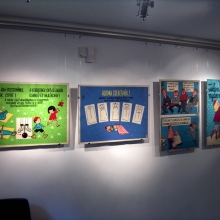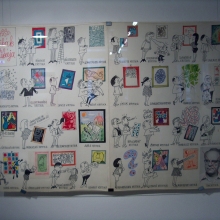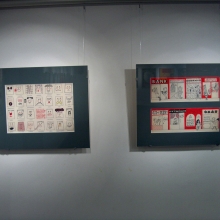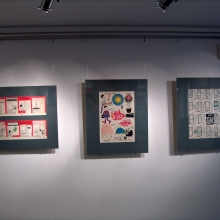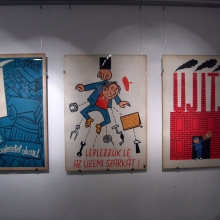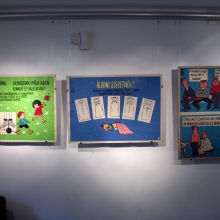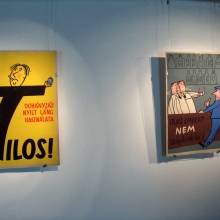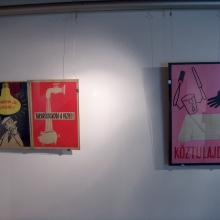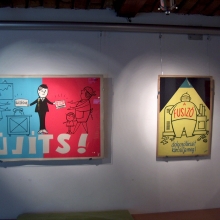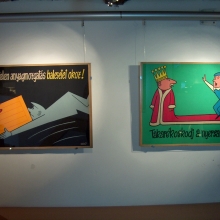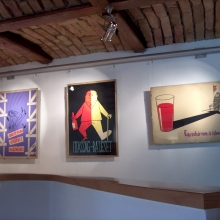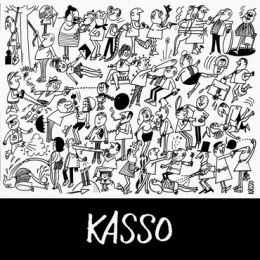art or business
Kasso
On view: 16 February – 18 March 2006
Félix Kassowitz
Graphic artist, cartoon director, caricature artist
(Vienna 1907 – Budapest 1983)
Today, most people associate the name Kassowitz with actor-director Mathieu Kassovitz (Munich, Amélie). Few people are aware that his grandfather was Félix Kassowitz (Kasso), who on top of his work as a caricature artist and poster designer was also among the first in Hungary to make animated advertisements.
In addition to his original caricatures, graphics and work-protection posters, kArton Gallery has also put on display his animations done in collaboration with Gyula Macskássy.
“The way Dezső Macskássy remembers it today: there was an ugly Pest-side tenement under 68 Bajza Street with two studios on its fourth floor. One of these was rented to three young artists: János Halász, Gyula Macskássy and Félix Kassowitz, the other to a sculptor by the name of Oszkár Zádori.
This was in 1932. The three young men made a living by designing posters, and later by making advertisements. Their company was called Coloriton. It was during this period that they created their emblematically distinctive new years card with its fish-headed, cigar-smoking and cat-headed filmstrip characters, which are still well-known today. János Halász had been to Paris already, and together with Macskássy, they were frequent visitors in Bortnyik’s ‘little Bauhaus,’ or Műhely. Halász may have been up to something already at that time, as, in Macskássy’s recollection, he regularly climbed out onto the tarpaper roof, which was level with the fourth floor, and diligently studied the English language.
According to János Halász’s account from 1978, they co-created up to 30-40 advertisements. Their colourful cartoon and puppet commercials were very successful. ‘The Bipack System arrived to Hungary from Berlin. It was on this that we made the recording. We sent out the negatives to be developed, and the film was returned to us from there in its finished form. While a two-minute film was worked on not for a day but a whole month, we had a lot of commissions and the technical standards of work were improving.’
After Halász, Félix Kassowitz was the next person to terminate the contract for studio rental, who in 1935 returned to caricatures, as many publications were interested in and awaiting his witty graphics. But first he reaped the rewards of his last advertisement strip on Odol Toothpaste.
Later Kassowitz also did some graphic work for Álmos Jaschik. Most likely on Jaschik’s initiative, he joined the staff that planned to create the film version of the folktale, ‘Gyémántkrajcár’ (‘Diamond Penny’). Approximately a quarter of the graphics and background of the film was already finished when in 1943 the film storage house was bombed to the ground. Following the war, Kassowitz assisted István Valker with making the Animated News, after which he dedicated his life exclusively to drawing caricatures.
In 1947 his graphics appeared in the National Saloon, in 1953 he had an exhibition at the Ernst Museum. His pieces were on display in 1958 at the ‘Sport Caricature’ show at the Sport Museum, in 1959, at the International Caricature exhibition of Plovdiv, and in Gelsenkirchen in 1968. In 1957, his Kasso-graphics album was published (Fine Arts Foundation Publishing, Budapest, 1957).
Kasso hadn’t studied drawing in any art school. His first caricatures were done between 1930 and 1932. For six years he was making cartoons, colour film advertisements and special effects films. After 1945, he worked at Ludas Matyi and was known and loved as one of the most popular caricature artists in Hungary. His round-headed children, his distinctive characters and smiling, wise humour continue to be known and appreciated even today. (Eszter Dizseri)

